Changelog: Improvements to app navigation and API
This changelog covers updates to the app navigation, API improvements, and several other changes from the past few weeks to help you work more efficiently.
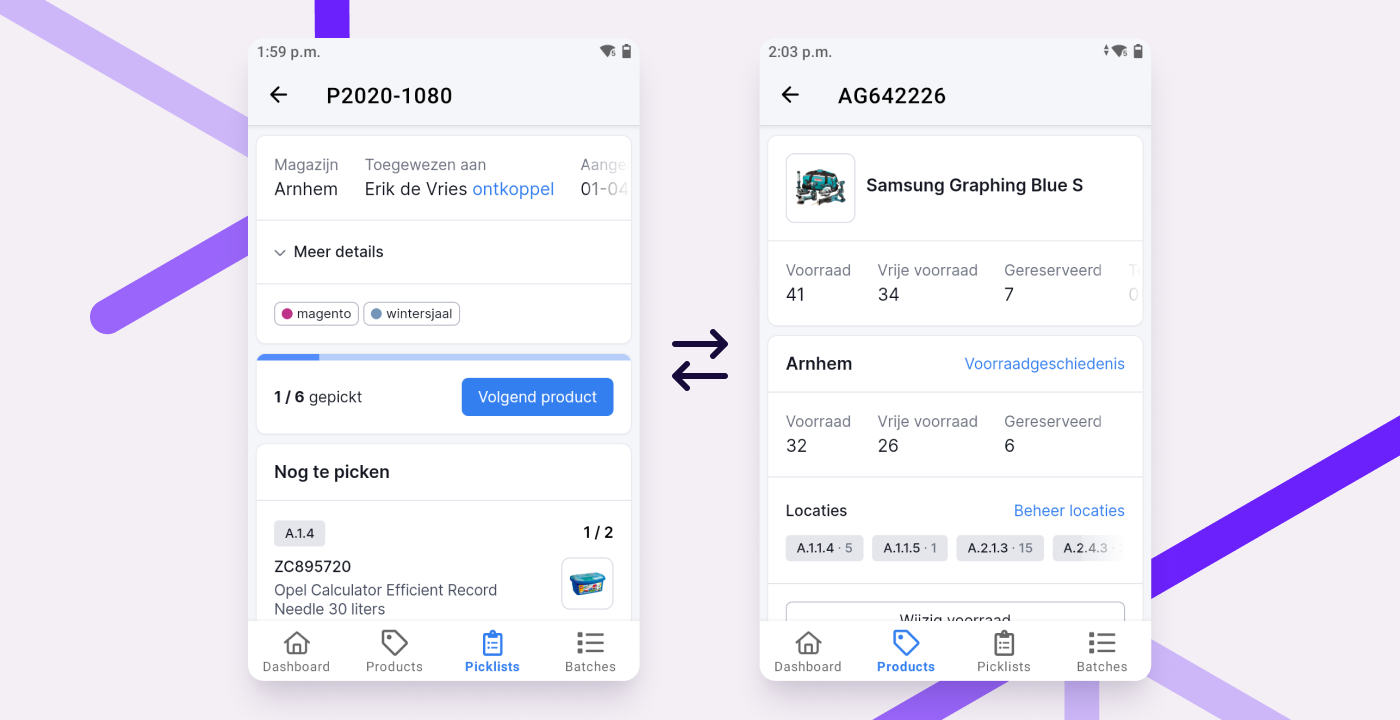
Easier navigation in the app
While picking or restocking, you often want to look up a product. Maybe an item is in the wrong place and needs to be moved, or you need to free up space for something new. After that, you want to continue with your picklist, batch or receiving task.
We’ve made that easier by displaying the navigation bar at the bottom of every detail page, not just on overview pages. This lets you quickly switch between a picklist, batch or receipt and a product, then back again. The app remembers where you left off, so you won’t need to search for your picklist, batch or receipt again.
You can now also return to the picklist overview directly from any picklist using the navigation bar. This is useful when you've scanned multiple picklists and want to jump back to the overview with one tap.
API improvements
Retrieve multiple specific products in one request
With the new idproducts filter on the products endpoint, you can now retrieve multiple specific products in one API request. This is more efficient and faster than sending separate requests.
Retrieve nested product compositions
Our API endpoint for retrieving product parts now supports fetching nested compositions. Use the parameter nested=true to retrieve all parts of a composition and its sub-compositions in one go. Example: /api/v1/products/1/parts?nested=true.
Integration improvements
- WooCommerce: We now import ParcelPro pickup locations on orders.
- Lightspeed: We now import Sendcloud pickup locations on orders.
- Shopware 6: We now support the official PostNL plugin. This includes pickup location selection, delayed shipping and evening delivery when importing orders from Shopware 6.
Other improvements
- When creating a singles batch, we prioritize products that appear on 3 or more picklists. This results in batches with more repeated products, which makes picking more efficient.
- If you've created multiple shipments for a single picklist, all of them can now be included in the shipping notification to the customer. This helps prevent customer service questions about split shipments. Learn more in our help article.
- On the new container history page, you can now see when and which products were linked or unlinked.
- For numeric conditions in rules (like product quantity), you can now use "equals" as a condition.
- On the updated singles batch page, you can now reassign the responsible person.
- When calculating the value for insured shipments with PostNL or MyParcel, we now use the purchase price instead of the selling price to avoid unnecessary insurance costs. If the purchase price is empty (€0.00), the selling price is used instead.
- For shipments containing a virtual product composition, we now calculate the insured amount based on the composition value only, not the individual parts. If the composition’s purchase price is €0.00, we fall back to the selling price.
- If you cancel a batch before any items have been picked, it will now be marked as "Cancelled" rather than "Complete."
- Cancelled orders in Picqer that are partially refunded in Shopify will no longer be reopened in Picqer.
Shipping labels: which printer should you use and how do you set it up?
When you’ve packed an order, it’s great to have the correct shipping label print automatically. No need to type in an address, and you can keep things moving quickly. But how do you set that up?
It all starts with choosing the right printer. There are a lot of options out there, so it’s easy to get overwhelmed or end up with the wrong one. This article explains why we recommend Zebra label printers and how to install them the right way.
Which Zebra label printer should you choose?
We believe the Zebra ZD421 series is the best option for warehouse use. This series is affordable, very durable and the labels are inexpensive. The status lights and buttons are intuitive, and setup is much faster compared to earlier Zebra models. Be aware that there are two types in this series: the ZD421d and the ZD421t. Here’s the difference:
- The d stands for “direct thermal,” where the label itself is heated and prints without any extra materials.
- The t stands for “thermal transfer,” which uses a ribbon—a roll of black plastic—that gets pressed onto the label. This means you’ll need to replace both the label roll and the ribbon regularly.
The benefit of ribbon printing is that labels last for years. But for shipping labels, a few months is more than enough. That’s why we recommend the d version for printing shipping labels. It also saves you money because there’s no ribbon to replace.
We’ve selected the best warehouse hardware for you in our Picqer Shop, including the Zebra ZD421d label printer.
How to install the printer
Installing a Zebra label printer isn’t difficult, but it’s important to do it correctly. That way, you can rely on your hardware when operations are running. Use this step-by-step guide to install the printer:
After installation, print a test label to make sure everything works. You can use this test label. If the label is clearly readable and shows all four corners, the setup is complete.
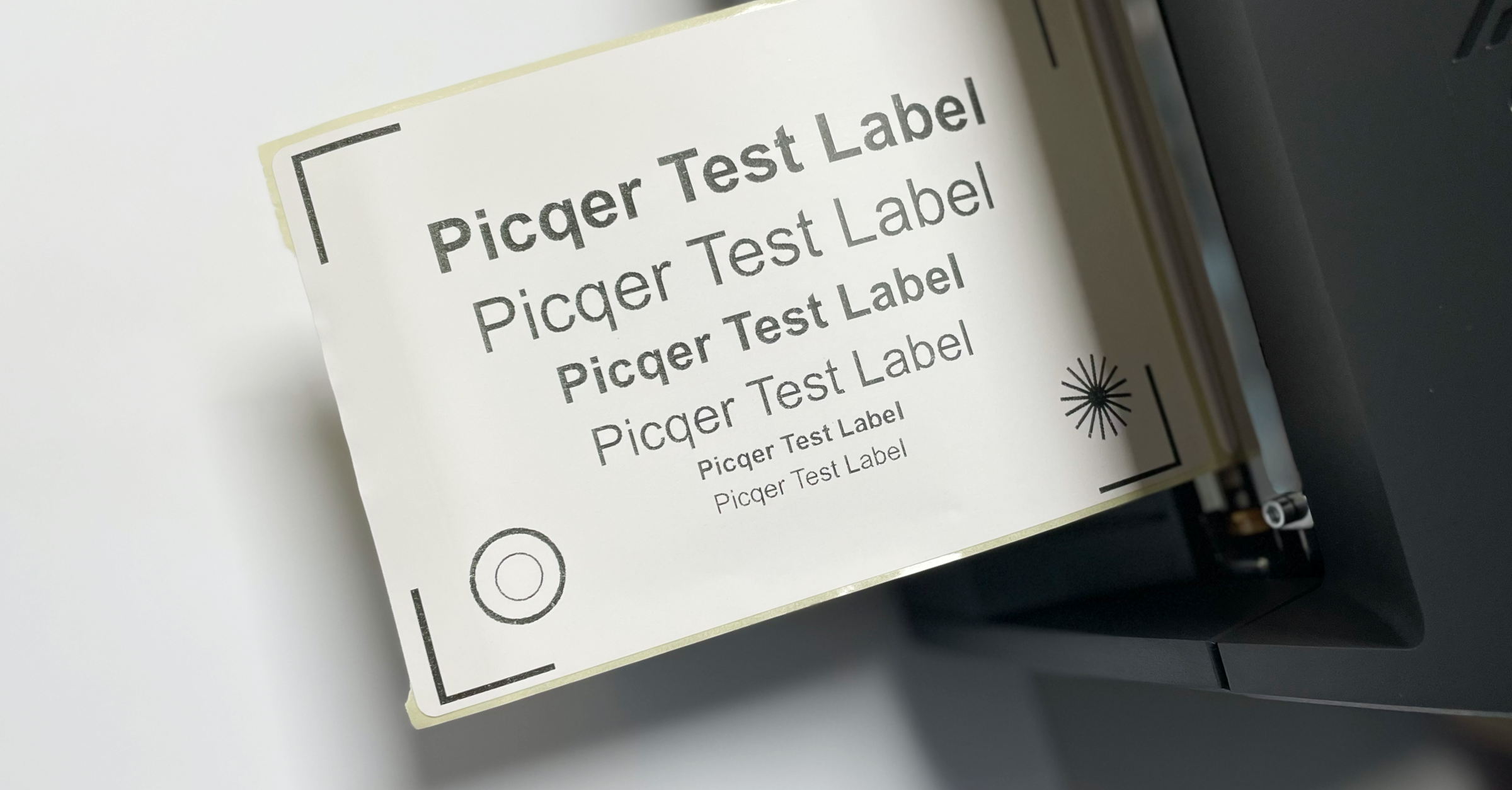
Automatically printing shipping labels with Picqer
If you use Picqer in your warehouse, printing shipping labels can be fully automated.
- First, connect your shipping carriers. With our standard carrier integrations, setup only takes a few clicks.
- Install PrintNode to enable automatic printing. PrintNode is included in your Picqer subscription.
- Add your printers in Picqer’s settings.
Once all products have been picked and checked, Picqer creates a shipment with the carrier. It takes into account the order weight and any customer preferences. The correct shipping label prints automatically. Picqer also sends the tracking code to your webshop. You can choose to automatically send a shipping confirmation email to your customer.
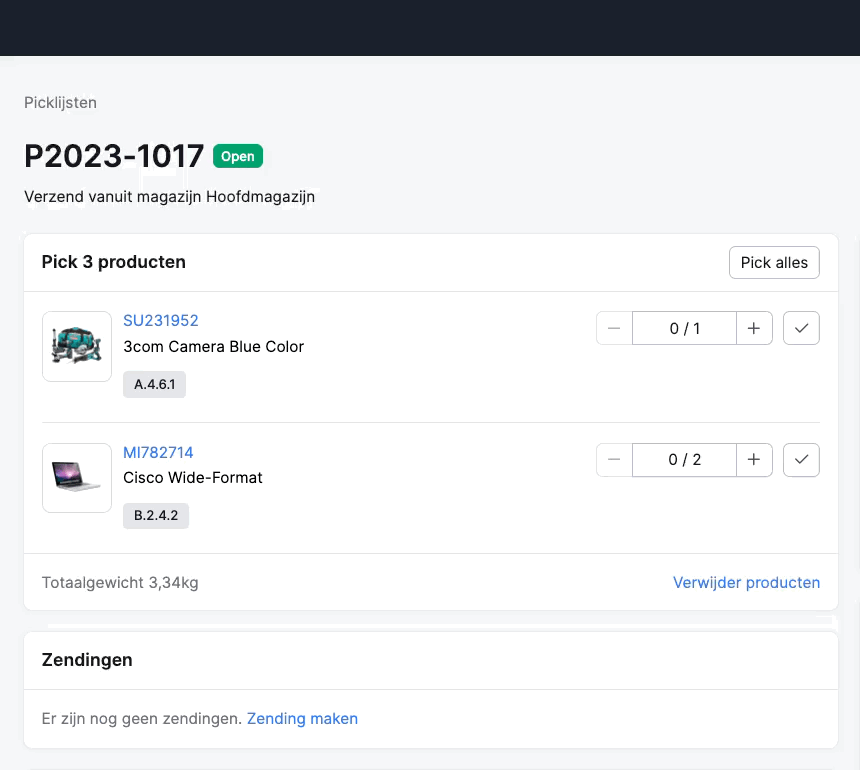
It doesn’t matter how many carriers you connect to Picqer. Whether you ship parcels, pallets or international orders, you can select the right carrier per order.
More control with fewer rules
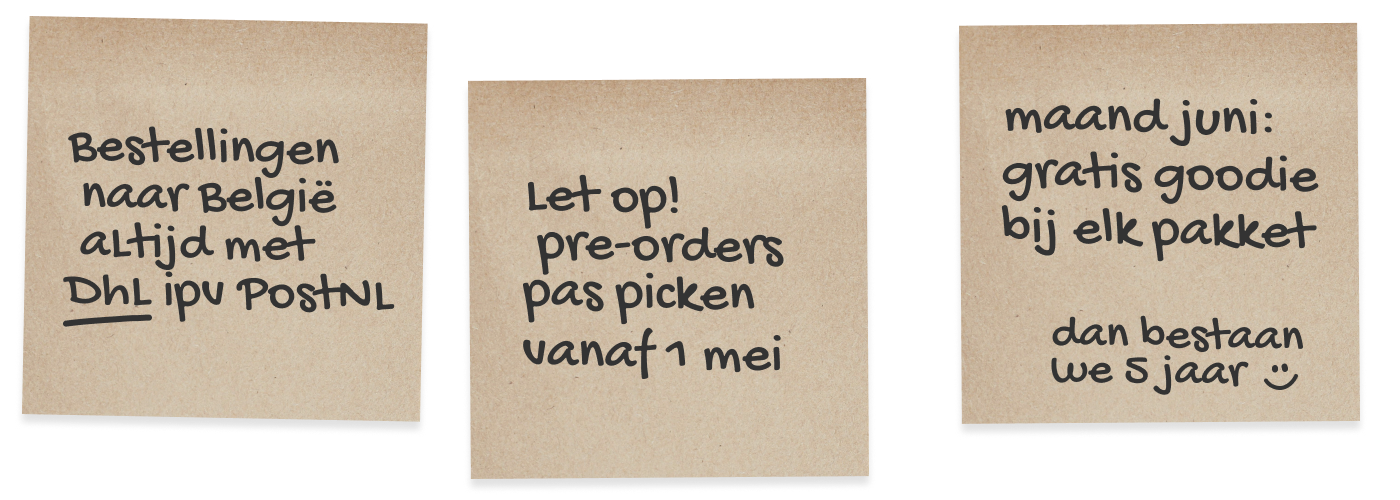
Those little “don’t forget” stickies may seem harmless, but managing exceptions in your workflow is not always easy. You need to communicate clearly with your team, and they need to remember to handle each exception correctly.
That’s why it’s best to allow as few exceptions as possible. The fewer ways there are to do something, the less risk there is of costly mistakes. But in reality, exceptions are often unavoidable, especially if you run a fulfillment business where each client may have different needs.
Picqer makes managing exceptions much easier. By setting up rules, you can automate actions in the software based on the conditions you define. When an order is processed or a picklist is created, Picqer automatically triggers the correct workflow. This allows your team to stay focused and keep their momentum.
Using rules in Picqer
Rules have been part of Picqer for a while. Based on user feedback, we’ve recently expanded what you can do with them. In this post, we’ll walk you through the improvements. Rules work the same for every Picqer user, but since fulfillment companies have a few extra options, the images show a fulfillment dashboard.
Selecting and editing multiple conditions
Below is an example of how to create a rule for shipping orders to Belgium with a different carrier. If you later expand to Germany and Denmark, you can easily adjust the rule with two clicks. For fulfillment companies, it's helpful that you can apply one rule to multiple clients. That means you don’t have to set up the same rule separately for each client, saving you a lot of configuration.
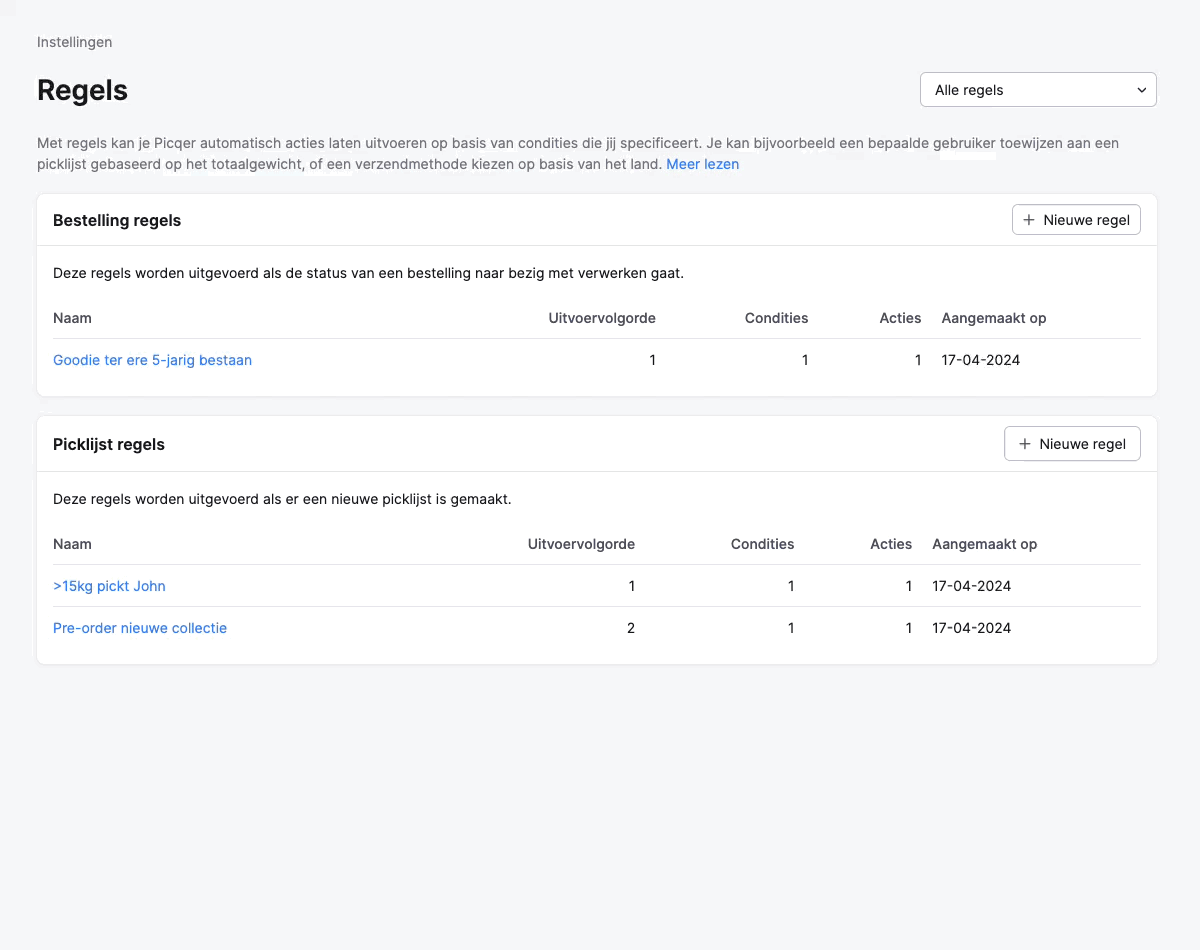
Filter the overview by fulfillment client
The example above also shows how to filter the rule overview by fulfillment client. This makes it much easier to see which rules are active for which client. Where the number of rules used to grow quickly, the overview is now more manageable with fewer rules.
Trigger actions at specific times
Rules let you control exactly when an action should happen. For example, you won’t forget to include a free goodie in every December order if you set up a rule for it. Starting June 1, Picqer can automatically add the free product to each picklist. Or if customers are pre-ordering products from a new collection that can only ship in May, a rule can snooze all picklists with the reference "pre-order" until May 1.
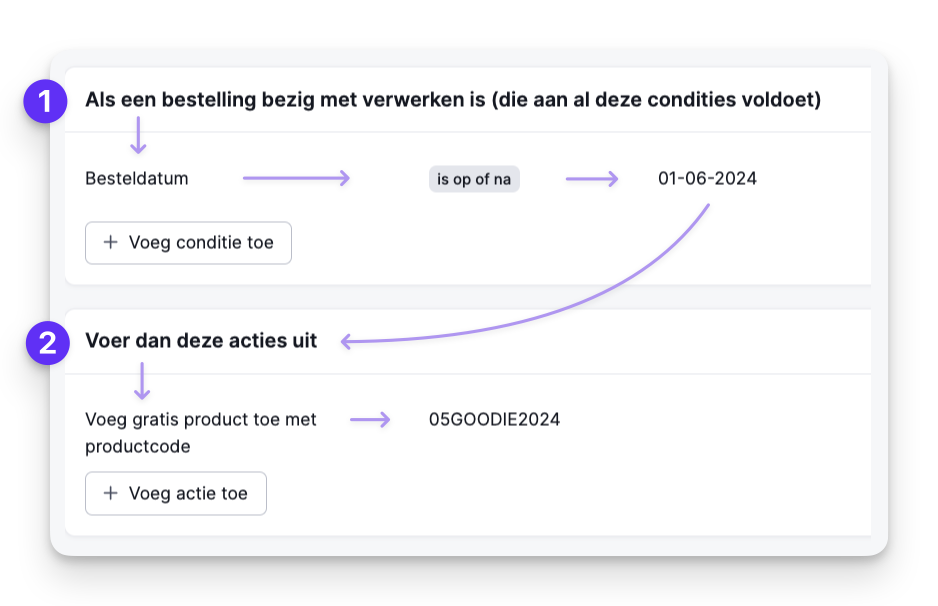
Automatically print or skip packing slips and picklists
When setting up Picqer for the first time, you choose whether to print packing slips and picklists automatically. But you can override that default with a rule. For example, you can choose to only print packing slips for certain fulfillment clients, depending on their preferences. This helps reduce unnecessary printing.
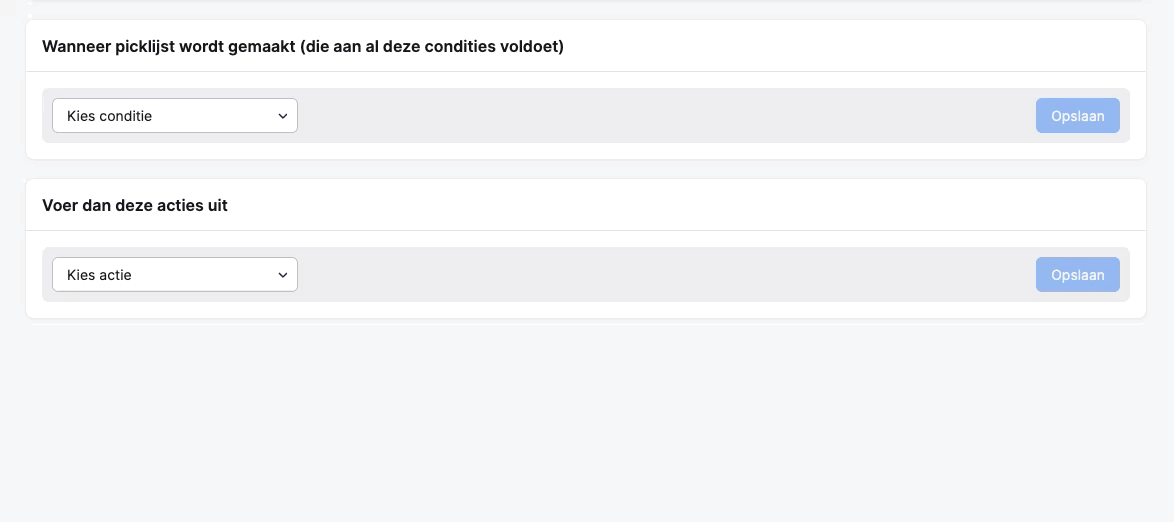
Changelog: Improvements to comments, rules and more
Over the past few weeks, we’ve made a number of improvements to give you more control over comments and rules. Read all about these and other updates in this changelog.

Improvements to comments
Comments help improve collaboration across your warehouse team. They’re useful for leaving notes so your future self and your coworkers know what was agreed upon or what happened and why. With an @mention, you can bring a message or question to the direct attention of a colleague or fulfillment client.
To make commenting even easier, we’ve introduced several improvements:
Better visibility for unread mentions
Previously, all mentions were marked as “read” as soon as you opened the mentions tab. We’ve changed that to help prevent unread mentions from being overlooked.
Now, mentions are only marked as “read” after you visit the page where the comment was posted. You can also manually mark mentions as read via the mentions tab by clicking “Mark as read” or “Mark all as read.” Unread mentions are highlighted in blue.

Easily mention colleagues in the app
Are you picking in the app and need to leave a comment or ask a question? You can now mention someone in the app by typing @ and selecting from the list. There’s no need to type their full name.
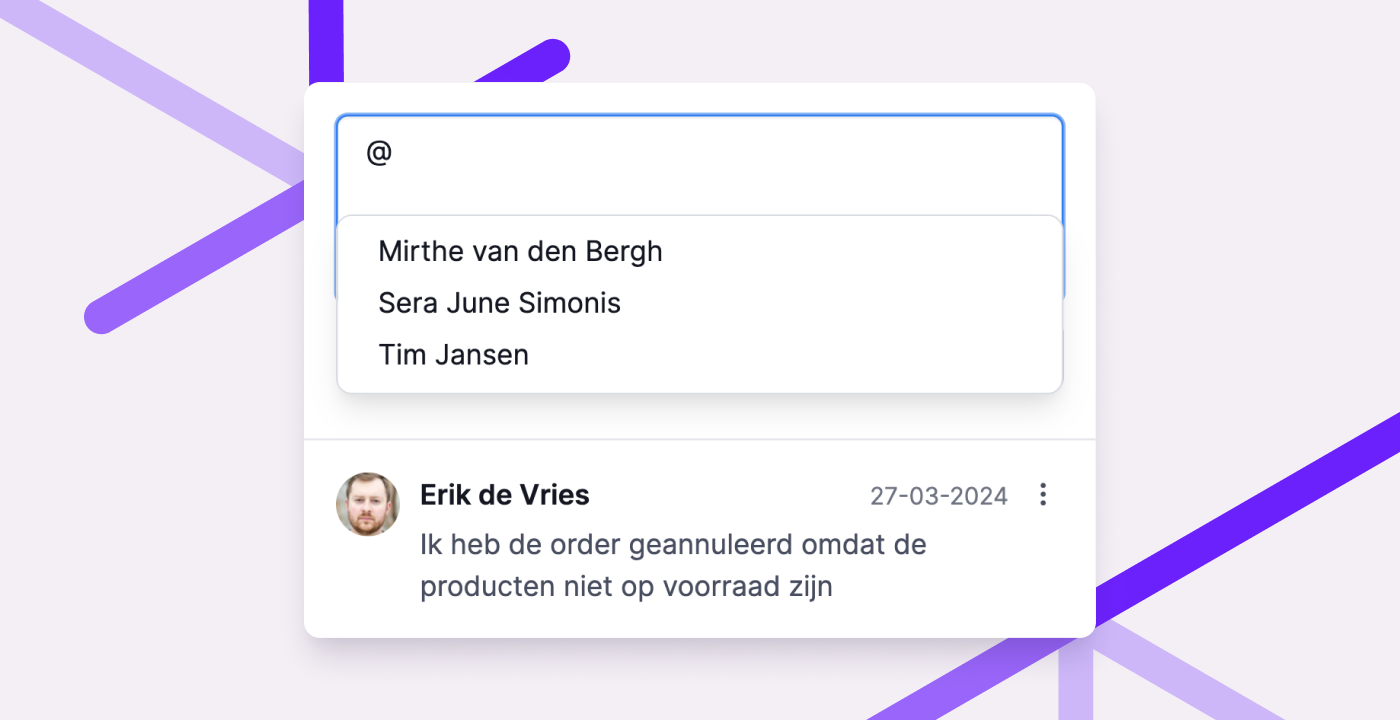
Better visibility of comments for fulfillment clients
In product, order, purchase and return overviews in the fulfillment portal, clients now see an icon when comments are present. This includes customer comments on an order.
![]()
Since most fulfillment clients don’t use the portal all day, it may take a while for them to see and respond to a comment. That’s why clients can now receive email notifications for mentions.
Add an email address in the fulfillment client’s profile to enable this. Clients can also manage their notification preferences on the new settings page in the portal. Email notifications are enabled by default and can only be turned off by the client.
These updates help fulfillment clients stay informed and respond faster when needed.
Read more about commenting in the fulfillment portal in this help article.
Commenting on a fulfillment client page
You can now add internal notes to a fulfillment client's page. These comments are only visible to your team, not the client, and can help document agreements or special arrangements.
View comments on canceled picklists
If you’ve enabled the experimental feature “Updated picklist and batch pages,” you can now view comments on canceled picklists. This lets you review why a picklist was canceled, if it was explained in a comment.
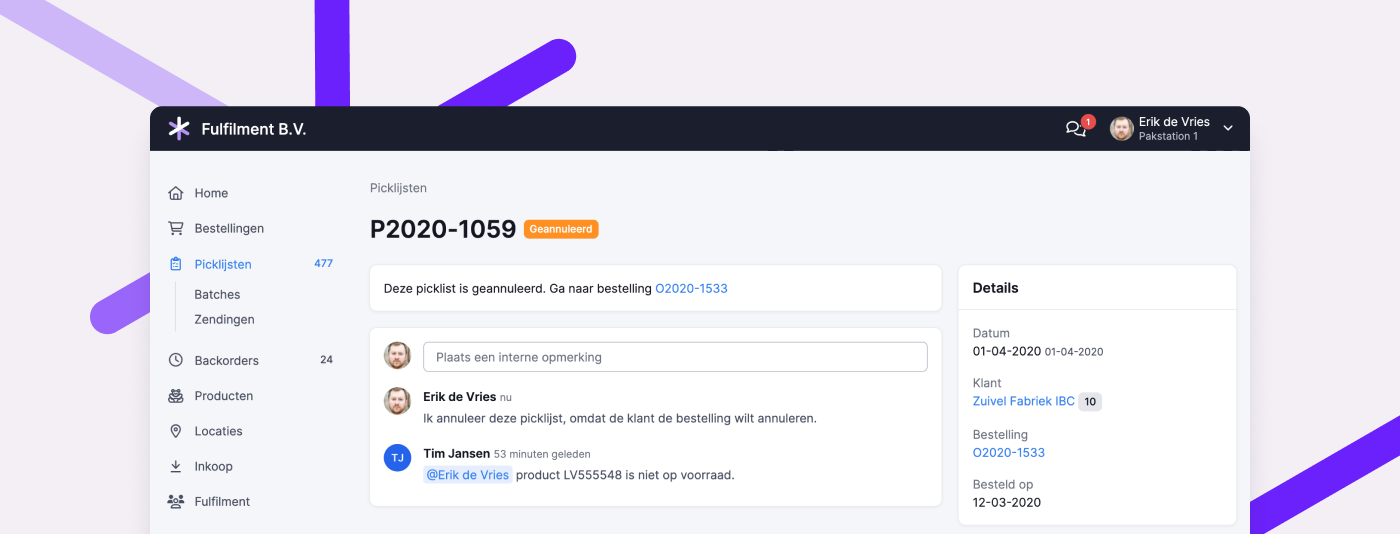
Improvements to rules
Rules let you automate parts of your workflow, helping you handle exceptions more efficiently. We’ve added a few features to give you even more control.
Use multiple warehouses and weekdays in rule conditions
For rules that apply to multiple warehouses or days of the week, you can now use the “is one of” or “is not one of” options. This allows you to select one or more warehouses or days, saving you from having to create separate rules for each.

View rule details from an order log
You could already see which rules had been triggered in the log of an order. Now, you can also click through to view the rule itself, inspect the details, and adjust the configuration or execution order if needed.
Longer condition fields
The maximum number of characters for a rule condition has been increased to 2048. This allows you to enter longer lists, such as product codes.
Set a default time for snoozed picklists
Previously, picklists snoozed manually or through certain rule actions were automatically set to resume at 7:00 a.m. You can now define your own default snooze time under General Settings, giving you more flexibility.

Other improvements
- When linking a picking container, you’ll now see the fulfillment client associated with the picklist. This helps you choose the correct container size.
- Customer comments from Shopware 6 are now imported with the order.
- If a picklist is canceled, any associated shipments will now be automatically canceled as well.
- If you’ve disabled automatic shipment creation in the app, it will no longer prompt you to create one.
- You can now see in the product log when and by whom a product was made active or inactive.
- Use the keyboard shortcut Ctrl + Enter (or Cmd + Enter on Mac) to submit a comment. It’s just a little quicker than clicking the “Post comment” button.
A look inside the SoundImports warehouse
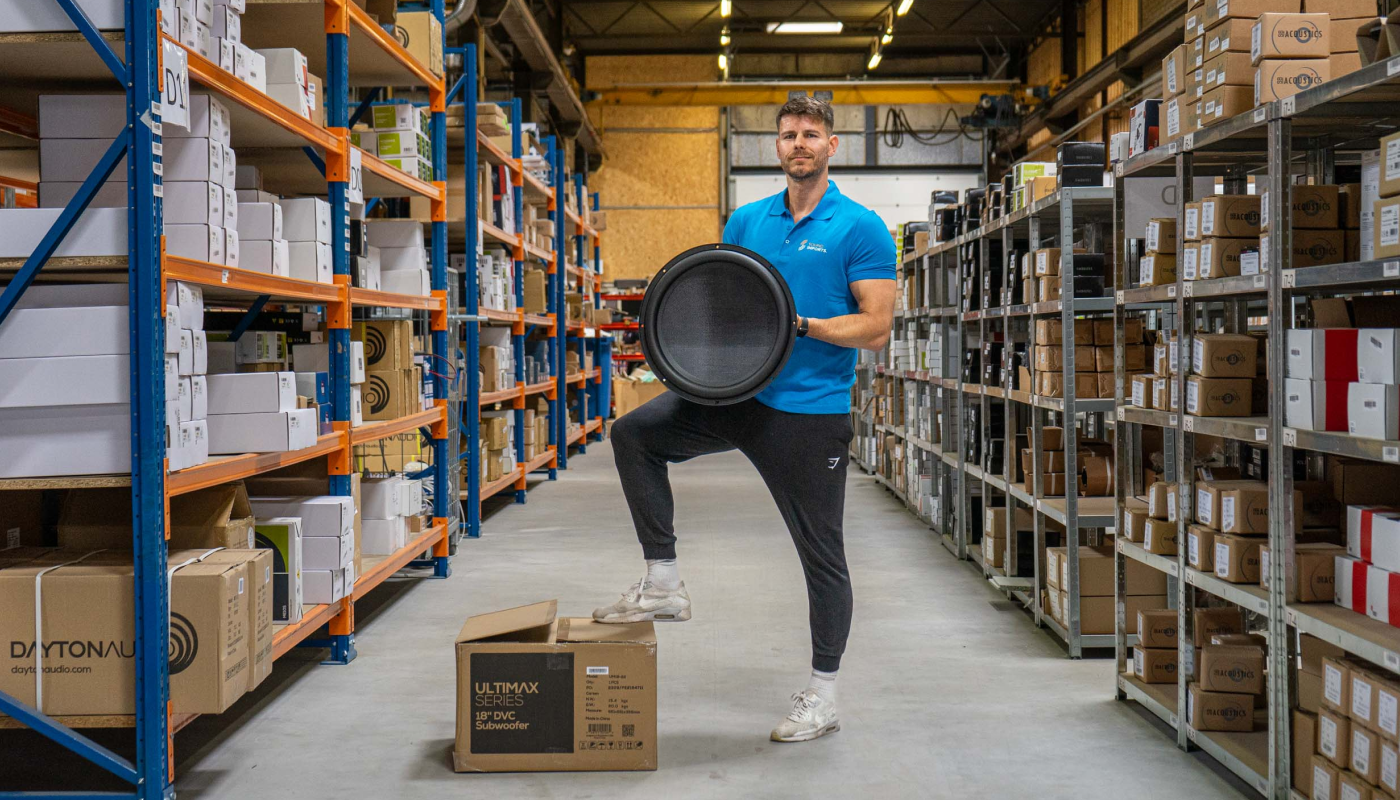
We regularly visit our customers to see how Picqer works in their warehouse. Recently, we were welcomed by SoundImports in Groningen. Their warehouse is filled with audio components for building your own sound systems. They started using Picqer in 2021, have grown significantly, and moved into a larger building.
We love these customer visits because they’re not just valuable for us—they’re probably valuable for you too. That’s why in this article, you can take a look behind the scenes at how another business runs their warehouse.
SoundImports at a glance
Planning the move
Before relocating, SoundImports took time to thoughtfully plan the layout of their new warehouse. That’s something we get excited about. A smart warehouse layout is the foundation for a strong process, and a strong process is essential for managing your warehouse with software. Software can’t fix process issues. SoundImports shared that they used tips from our book A warehouse to be proud of, which we were thrilled to hear. Our goal is not only to help with software, but also to share useful knowledge.
Warehouse layout
- SoundImports’ range includes everything from tiny cables and connectors to large amplifiers and speakers. Smaller items are stored in the front racks. Some are kept loose in small cardboard boxes for easy picking. Larger products are stored further back where there's more space, including pallet racks for bulky boxes.
- Fast-moving products are placed in a separate rack close to the packing stations, so staff don’t waste time walking back and forth.
- The racks are numbered like house numbers: even numbers on the left, odd numbers on the right. These location numbers are entered in Picqer, so the software knows exactly where each product is. This allows picklists to be automatically sorted in the right order for the most efficient route through the warehouse. If you’re not using software, you can sort locations in Excel to plan a good walking route.
- Locations are clearly marked with signs, making it easy to spot where you need to be.
- Separate packing stations and picking containers are used for B2C and B2B orders. Even the boxes and tape differ between the two, helping keep the workflows visibly separated.
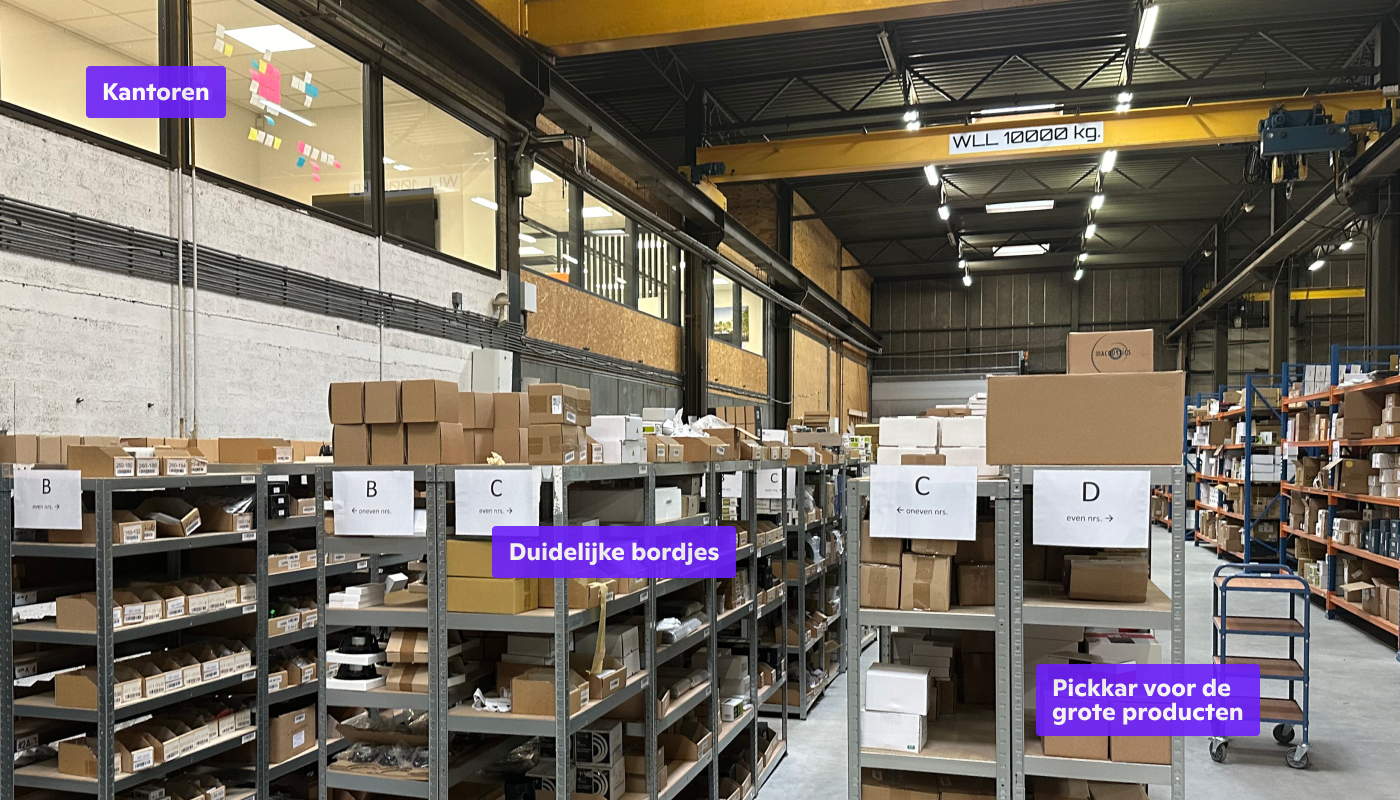
How picking is done
- Every product has a barcode, so warehouse staff can scan items using mobile devices. No need to print paper picklists, which saves on paper and costs.
- Most picklists are processed in batches. This means many items can be picked during one round through the warehouse. Before picking starts, a batch is created in Picqer. The batch shows where each product is and how many to pick to complete all orders.
- The picking carts are adapted to product size. Large items are placed directly on the cart. Smaller items are picked using carts with bins. This makes batch picking easier, as each bin can hold the items for one order. At the packing table, the bins are processed one by one.
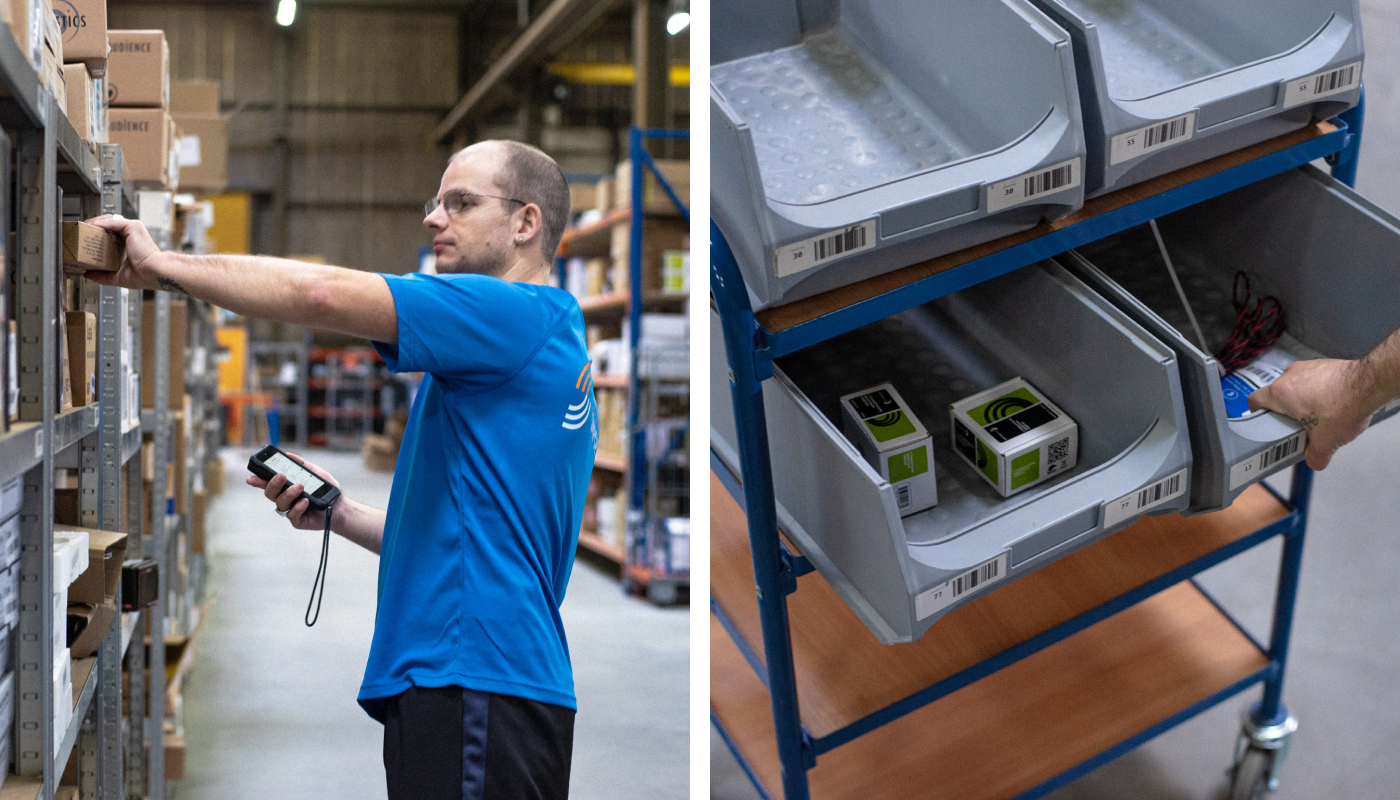
Making time to improve
Your warehouse deserves just as much attention as your webshop, marketing and customer service. At SoundImports, you can really see that philosophy in action. From the offices and meeting rooms, everyone can see the warehouse operations. That connection is important to them, because ideas from the office have to be executed in the warehouse.
To make sure promises to customers are realistic and achievable, they hold “Maga-Friday” every Friday. It’s a dedicated time when warehouse staff share feedback and ideas. This way, they consistently work on improvements, and everyone contributes to the business together.
Working with Picqer
Software can quickly become complex. That’s not what we want with Picqer. We focus on making it simple to use and easy to manage yourself. SoundImports is a great example of this. During the holiday season, the founder’s young daughter helped out in the warehouse. She understood Picqer so quickly that she was picking orders on her own within five minutes!
SoundImports has also built their own solutions for specific needs, such as a Chrome extension that provides automatic Picqer notifications. You can use our public API for this kind of customization. It gives you the freedom to create exactly what you need—with endless possibilities.


